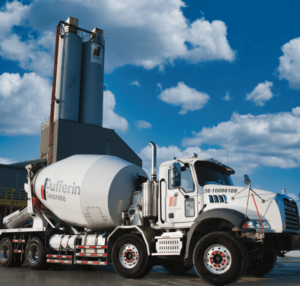The Impact of Toronto’s Warehousing on Last-Mile Delivery
In today’s rapidly evolving world of e-commerce and globalized supply chains, Toronto’s warehousing sector has emerged as a key player in enabling efficient and reliable last-mile delivery. As consumer expectations rise, the logistics landscape must evolve, especially in bustling urban centers like Toronto, where warehousing and distribution services support both regional and global trade.
In this article, we delve into the significance of Toronto’s warehousing industry and examine its profound impact on last-mile delivery, detailing the logistical frameworks, strategic locations, and innovative practices that make Toronto a hub for modern distribution.
What is Last-Mile Delivery and Why Does It Matter?
Last-mile delivery refers to the final step in the logistics process, where goods are transported from a distribution hub to the end customer. This leg of delivery is often the most challenging and costly, accounting for a significant portion of overall shipping expenses. Factors like traffic congestion, complex urban layouts, and rising consumer expectations for same-day or next-day delivery make last-mile logistics a critical area of focus for both e-commerce and logistics companies.
For metropolitan areas such as Toronto, which boasts a large and diverse consumer base, last-mile delivery is crucial for ensuring that consumers receive their purchases in a timely and efficient manner. Toronto’s warehousing industry, with its strategic locations and state-of-the-art facilities, plays an instrumental role in enhancing the efficiency and reliability of last-mile logistics.
Strategic Location of Warehousing Facilities in Toronto
Toronto’s prime location, connected to both national and international transit routes, positions it as a pivotal hub for warehousing and distribution. Warehouses in Toronto benefit from proximity to key transportation infrastructure such as Pearson International Airport, the Port of Toronto, and a vast network of highways and railroads. This connectivity allows for seamless transportation of goods across Canada and into the United States, enhancing the speed and efficiency of last-mile deliveries.
Furthermore, Toronto’s central location within the Greater Toronto Area (GTA) allows warehouses to serve the city’s dense population and surrounding suburbs efficiently. With well-placed warehousing facilities, goods can be stored closer to end customers, reducing delivery distances and enabling quicker response times.
Technology-Driven Warehousing Solutions
Advancements in warehousing technology have transformed Toronto’s distribution landscape. Warehousing facilities in Toronto are increasingly adopting automation, robotics, and artificial intelligence (AI) to streamline inventory management, improve picking accuracy, and speed up order processing. These innovations are essential for meeting the demands of last-mile delivery in a fast-paced, consumer-driven environment.
Automated Storage and Retrieval Systems (AS/RS)
AS/RS solutions are widely used in Toronto’s warehouses to optimize storage density and reduce the time needed to retrieve products. These systems allow for efficient handling of high volumes of inventory, which is especially important for e-commerce businesses dealing with varied product ranges. Faster retrieval translates to quicker dispatches and, ultimately, faster last-mile deliveries.
Real-Time Inventory Management
Effective real-time inventory management systems provide visibility over stock levels, allowing warehouses to manage supply more efficiently and minimize shortages or overstock situations. This visibility enables businesses to anticipate demand surges and prepare for high-volume periods, like holiday seasons, ensuring that last-mile delivery timelines are consistently met.
Use of AI and Data Analytics
AI-powered data analytics assist in predicting demand, optimizing delivery routes, and monitoring delivery performance. For example, data on traffic patterns or peak delivery times in Toronto can be analyzed to adjust routes and minimize delays. Such predictive insights are crucial in a dense urban area like Toronto, where congestion can significantly impact delivery times.
Sustainability Initiatives in Warehousing and Last-Mile Delivery
Sustainability is becoming a priority for logistics providers and consumers alike. Many warehousing facilities in Toronto are implementing green practices to reduce their environmental footprint. These practices include using energy-efficient lighting, solar panels, and electric vehicles (EVs) for last-mile deliveries. Toronto’s warehousing industry is moving toward greener solutions to support eco-friendly logistics.
Electric and Hybrid Delivery Fleets
Electric and hybrid vehicles are being incorporated into the last-mile delivery fleets to reduce carbon emissions in Toronto’s urban areas. These vehicles are not only better for the environment but also reduce noise pollution, making them ideal for residential neighborhoods.
Green Building Certifications
Many Toronto warehouses are striving for LEED (Leadership in Energy and Environmental Design) certification, which is awarded to buildings that adhere to strict environmental standards. These certified warehouses consume less energy, utilize sustainable materials, and often implement water-saving systems. With green building initiatives, Toronto’s warehousing sector demonstrates a commitment to sustainable practices that align with the city’s environmental goals.
Impact on Local Economy and Employment
Toronto’s warehousing industry does more than facilitate efficient logistics; it also contributes significantly to the local economy. The sector generates employment opportunities across various skill levels, from warehouse operatives and drivers to logistics managers and IT specialists. As the e-commerce sector continues to grow, the demand for skilled workers in warehousing and logistics is set to rise, further boosting Toronto’s economy.
Moreover, Toronto’s warehousing sector supports numerous small and medium-sized businesses by providing affordable storage and distribution solutions. By partnering with local e-commerce companies, Toronto’s warehouses play a critical role in helping businesses scale their operations and compete in the global market.
Challenges and Future Directions for Warehousing and Last-Mile Delivery in Toronto
While Toronto’s warehousing industry has successfully supported last-mile delivery, it faces challenges that require innovative solutions to sustain growth and efficiency.
Urban Congestion
Toronto’s dense urban infrastructure often leads to congestion, which can delay last-mile deliveries. To mitigate this, logistics companies are increasingly relying on micro-fulfillment centers that bring inventory closer to end customers, reducing transit times and alleviating the effects of traffic congestion.
Rising Costs and Real Estate Limitations
As demand for warehouse space grows, so do real estate costs. Finding suitable space for warehousing within Toronto’s metropolitan area is increasingly challenging. Many companies are looking toward vertical warehousing solutions or exploring nearby regions like Mississauga and Brampton for more affordable and accessible space.
Innovation and the Future of Warehousing
Toronto’s warehousing industry must continue to innovate in response to consumer demands and logistical challenges. The adoption of drone deliveries, autonomous vehicles, and robotics could redefine last-mile delivery, making it faster and more efficient than ever. As these technologies advance, Toronto’s warehousing and logistics sector will need to adapt to integrate these new solutions and stay competitive on the global stage.
Conclusion
Warehousing in Toronto industry is a dynamic and essential component of the city’s logistics and distribution landscape. With its strategic location, advanced technological adoption, and commitment to sustainability, Toronto’s warehousing sector is well-positioned to support the demands of last-mile delivery. The city’s logistics infrastructure not only enhances delivery efficiency for local and global businesses but also contributes to the economic growth and sustainability of the region. As the industry faces new challenges and opportunities, Toronto’s warehousing sector will continue to innovate, solidifying its position as a leading force in North American logistics.











Post Comment